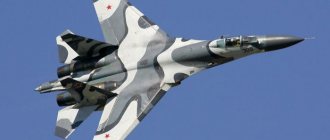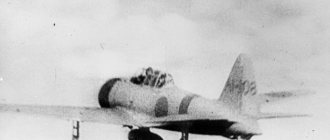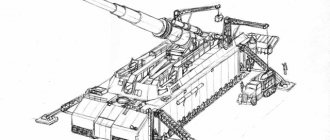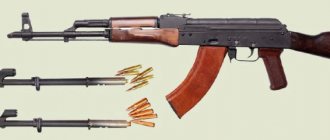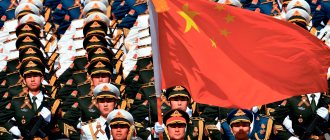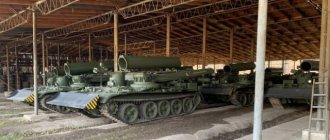Despite all our internal cultural and psychological characteristics, in most cases we perceive events occurring in the world in a very stereotypical way. For example, Western expansion in general or specifically American expansion is interpreted literally: they will come, they will take it, they will carry it away. Which, in general, is not surprising if we remember that, for example, from 1783 to 1900, the territory of the United States increased sevenfold (from 1.53 to 9.39 sq. km), and the area of NATO’s European partners increased over 25 years 1.5 times. Against this background, China is perceived as something globally stable in space. As of today, the border of the People's Republic of China is not much different from its configuration during the Han Dynasty two thousand years ago. It seems that the growing power of the Red Dragon is purely an economic issue, and this is wrong.
Yes, at first glance, Beijing does not have any serious territorial claims to anyone and does not announce expansionist plans, but this impression is formed due to a misunderstanding of the actual nature of China’s global goals.
The Chinese school of geopolitics operates with completely different, its own views and concepts. It takes its own picture of the spatial boundaries of a safe world as the basis for its worldview. It is outlined by three simple lines.
Its northwestern line with a total length of more than 12 thousand kilometers passes through Russia, Mongolia, Kazakhstan, Kyrgyzstan, Tajikistan and Uzbekistan. This is a land direction in which China primarily allocates the space of Greater Central Asia, which, in addition to the Central Asian republics, also includes Turkey and Iran. Russia here is considered a large, even leading, but still only a regional power, providing China with a safe rear.
The southwest line includes India, Pakistan, Afghanistan, Bhutan, Nepal and Bangladesh and runs almost along the edge of the Qinghai-Tibetan plateau and the unbroken chain of Himalayan mountains, which are perceived as a kind of natural border wall. Here the main enemy is considered to be India, which is not inferior to China in terms of population size.
The southeastern line covers the DPRK, the Republic of Korea, Japan, 10 ASEAN countries, Australia, New Zealand and a number of other states in the southwest Pacific. Its length is 6.5 thousand km by land and 18 thousand km by water. At the moment, this direction is considered as the main vector of geopolitical, economic and strategic development. It also contains the main threats, since it decisively intersects with the global space of the United States. In particular, Washington’s key trading partners are 57 countries, Beijing’s – 92, of which 27 are “included” in the American list, including 19 in its “Pacific part”.
In this new geopolitical structure, China is assigned the role of the center or the Middle State, which is responsible for financial, business, raw materials and commodity flows.
According to the Chinese ruling elite, in the future, by the middle of this century, most of the rules and concepts that are familiar today - unconditional Western economic and technical dominance, the key role of the USA and the EU in the financial world, and even power politics - will lose their meaning, giving way, first of all, to mutually beneficial economic cooperation. To this end, China is implementing the largest global economic project in history, “One Belt, One Road.” If previously the Marshall Plan was considered the leader, according to which $800 million was invested in the restoration of the European economy, then over $300 million has already been invested in the Belt and Road projects, by 2035–2040 it is planned to invest even more than a trillion dollars, and the total total The project currently has no figures at all. Expert estimates range from 3 to 12 trillion dollars.
In addition to the civilian sector, arms exports play an important role in the Chinese project. In addition to purely monetary profit, it creates lasting political and cultural instruments of influence.
The world's third largest weapons supplier
Usually, when talking about China, people remember the Aliexpress online store and its positive foreign trade balance. Militarily, the PRC still looks like a thing in itself; if it does anything, it does so exclusively for the needs of its own armed forces. There was a time when the Celestial Empire actively supplied cheap clones of Soviet weapons (mostly light small arms) with a level of quality corresponding to the price. In addition, its recipients were exclusively ideological allies. Yes, it was a long time ago, and it ended then.
Since about the mid-80s of the twentieth century, China has only been buying weapons from everyone it can. First of all, for mastering technologies and setting up our own production.
Key arms exporters for 2014
All this is true, but over the past 15 years, China has become the third largest arms supplier in the world by sales. The Stockholm Peace Research Institute (SIPRI) has calculated that the USA accounts for 29% of the world market, Russia - 27%, China provides 5%, Germany and France each have approximately 3.5-4%. Moreover, over the past five years, the scale of Chinese exports has increased by 143%, while American exports have increased by only 23%, Russian exports by 37%, and German and French exports have generally fallen by 43 and 27%, respectively. From 2012 to 2016, China's cumulative overseas arms sales reached $8.77 billion.
Structure of the Chinese arms trade
Moreover, light small arms occupy an extremely small share of them. A little, about 5%, of artillery and multiple launch rocket systems is supplied abroad
. It should be noted that in terms of cannon artillery, the PRC is not particularly active in developing it either for its own needs or for export. The technical characteristics of the 155-mm self-propelled gun PLZ-45 promoted by Beijing are quite average. Weight - 30 tons, firing range of a high-explosive fragmentation projectile - 24 kilometers. There are only two advantages - ease of use and low price. Saudi Arabia received 27 units of such self-propelled guns for $200 million, of which the guns themselves accounted for 40% of the amount, or approximately 2.9 million each. While the South Korean K-9 Thunder (96 self-propelled guns were exported) costs the buyer 3.3–4.2 million, the French Caesar self-propelled gun costs 5.66 million per unit, and the cost is the best in the Western world The German PzH2000 starts at $6.75–7.4 million. However, the record here belongs to the American M-109A5, offered to foreign customers at 11.45 million apiece.
The situation is noticeably better in the niche of multiple launch rocket systems. For a quarter of a century, China has been actively developing missile technologies, in which it has achieved significant success.
Some of them are sold into a good range of ammunition for MLRS, which creates a certain interest in launchers. For example, such as the 122 mm Type-81 and 370 mm AR-3 (largely copied, albeit with significant modifications, from the Russian 9K58 Smerch MLRS).
AR-3 MLRS at a military-technical exhibition
However, the main part of Chinese arms exports are anti-aircraft missile systems and ground armored vehicles, accounting for 31 and 19 percent respectively.
Among armored vehicles, the VT-1A tank has enjoyed relative success (supplied to Morocco, Myanmar and Pakistan), as well as the VT-4, which replaced it, as stated, in terms of combat characteristics it is practically equivalent to the main PLA vehicle - the Type-99G tank.
But the common weak point of Chinese tanks is still the engines.
For a long time, Beijing relied on their supply from Ukraine, as well as on close cooperation with Ukrainian engineers in the field of technology development. Although some success was achieved, in general the overall level of reliability of the result was still not up to par. This significantly hinders sales of Chinese tanks, despite good electronics and very competitive price offers, even in such “Chinese-oriented” markets as Malaysia, Southeast Asian countries and Chile.
Approximately the same picture is observed in the segment of armored personnel carriers and infantry fighting vehicles. Although the Chinese VP-1 and WZ-523 are selling relatively well, their main market remains primarily the poor countries of Southeast Asia, which are not too demanding in terms of the technical characteristics of “infantry wagons.”
The same WZ-523 has insufficient bulletproof armor, but it is very unpretentious, easy to maintain and very cheap, almost three times cheaper than the average American or European version.
Can the Chinese military industry make better technology? Maybe. The same VT-9 in terms of tactical and technical characteristics is close to the Russian T-90, but, as a tender in Thailand showed in 2016, it is already almost a third more expensive. The same applies to the latest Chinese 155-mm self-propelled howitzers PLZ-05 and MLRS A100. They are good, but not cheap anymore.
In turn, China offers quite good anti-aircraft systems.
Although everything with them also began with copying, including unlicensed, foreign analogues, both Russian and European, today Chinese engineers have managed to go further, reaching the level of synthesis of the resulting solutions with new capabilities, and in some cases even revolutionary concepts.
The results, of course, are not yet revolutionary, but they are already quite successful. In any case, Chinese proposals are increasingly beginning to outperform Western and Russian ones at international tenders.
A good example of this is the story of the competition for the supply of long-range air defense systems for the Turkish army in 2013.
The Chinese HQ-9 system, recognized as the winner, is an alloy of elements of ground equipment developed in Russia at the request of the PRC, modules supplied from the Russian Federation for export, its own self-propelled part, as well as Chinese modifications of materials received from Israel for the American MIM-104C anti-aircraft missile. Very deep revision. And, although the competition was canceled under US pressure, the fact remains that in a number of combat parameters the HQ-9 came close to the Russian S-300PMU2 at a lower price.
SAM HQ-9, China
Separately, it should be noted the anti-ship coastal ballistic missile systems DF-21D, DF-26D. Strictly speaking, they are based on the American medium-range missile MGM-31C Pershing-2.
The same one that caused the famous Cuban Missile Crisis. True, in Chinese anti-ship missiles there is little left of their progenitor, and now their main purpose is sea, not ground, targets. If the information on the reliability of the systems is confirmed, then we will have to admit that Beijing managed to create an anti-ship weapon that decisively changes the entire balance of power in the war at sea. At least within the range of DF-21D, DF-26D. There is no official export version yet, but statements from the Chinese military about the start of work on its development have already appeared in the specialized press.
The second breakthrough area where the Chinese military industry has achieved undoubted success is anti-satellite weapons.
In 2016, Beijing conducted successful tests to destroy its own satellite, and, apparently, we can say that the PLA has weapons to destroy objects not only in low orbits (popular with reconnaissance vehicles), but also in high geostationary orbits (up to 40 thousand km), where satellites for global positioning and communication systems are usually located. However, it is unlikely that China will want to export these weapons in the foreseeable future.
But what the Red Dragon is actively concentrating on is aviation, where progress is moving at a very fast pace. As experts note, the only thing holding the Chinese back is their inability to come up with something breakthrough entirely on their own. But they are able to refine what they have mastered very well.
Thus, on the basis of the Soviet MiG-21, the FC-1 was developed, which, together with Pakistan, is produced for export under the designation JF-17 Thunder. Moreover, this is not a clone, but a very deep modernization, significantly exceeding the level of the Soviet machine. By the way, in Pakistan the JF-17 has been put into service and is being purchased for the needs of the Air Force. Chinese engineers also worked on the Russian Su-33 for the carrier-based air group of Chinese aircraft carriers. It's called the J-15 and should outperform the Su-33 in terms of performance. Of course, the J-11, being developed on the basis of the Su-27SK, should be noted. It is important to note that since 2016, the Chinese industry began to equip 4th generation vehicles with the WS-10 Taihang engine of its own design. Moreover, they are installed not only on two-engine, but also on single-engine cars.
JF-17 Thunder
And all this sells quite well. Pakistan purchased 36 J-10 aircraft, and by 2025, 250 JF-17 aircraft. In addition, it is reported that contracts have been signed for the supply of 48 such machines to third-party buyers. Apparently, we are talking about Egypt. Which, in general, is not surprising. In terms of its combat and aerobatics characteristics, the vehicle corresponds to the level of the F-16 Block 42, but costs exactly half as much.
In addition to manned aircraft, China is confidently becoming a leader in the field of drones of both light and heavy attack types of the MALE class (medium altitude and long flight duration).
Created on the basis of the ideas and technical solutions of the American MQ-1 Predator, the Chinese drone Pterodacty-1 of the AVIC corporation and the CH-4 Rainbow of the rocket and space concern CASC have already been purchased by Saudi Arabia, Egypt, Algeria, Iraq, Nigeria, and in the post-Soviet space - Kazakhstan and Uzbekistan .
The successes of Chinese shipbuilders should also be noted. No, they are not yet building large ships for export. The main efforts are focused on mastering the technology for creating leading classes of ships, primarily attack aircraft carriers. But China has already begun exporting diesel submarines. And not just diesel ones, but air-independent ones, which puts them on a par with the best projects of this class in the world. China Shipbuilding and Offshore International Corporation (CSOC) presented at the international arms exhibition IDEX 2022 a model of the S-26 type submarine, which is an export version of the Chinese Yuan-class submarine (Type 039B).
Model of an S-26 type submarine with an anaerobic plant. The liquid oxygen tank is marked in red.
According to Prime Minister of Thailand Prayuth Chan-o-cha, by 2025 the country's Navy will receive three submarines of this type. Moreover, according to the contract, Thailand pays only $100 million for two, and China provides the third for free. Although this makes you smile, we must admit that they are inferior to the best in their class similar non-nuclear submarines of the German U-212A project only in terms of maximum diving depth (300 meters versus 700), and they are nine times cheaper.
In 2009, Turkey signed a contract to purchase six U-214s (a further upgrade of the U-212) for a total of 2 billion euros, or approximately $433 million each.
Based on the totality of indicators, Chinese military exports correspond to the level of the Russian Federation approximately 10–12 years ago. But this gap is noticeably narrowing. In the mid-80s, China's lag behind Russia was absolute.
However, the true significance of the current state of affairs becomes clearer when one evaluates not only what China exports, but also to whom it supplies these weapons.
Chinese threat
The militarization of China, which, according to various estimates, has from several hundred to several thousand nuclear warheads, naturally attracts the close attention of the world community. Russia is also monitoring the increase in China’s military power. Is China a potential threat to our country? Some experts answer this in the affirmative.
They find the roots of China's possible military aggression in the country's most acute internal problems: overpopulation, high unemployment, lack of natural resources and arable land, and a catastrophic environmental situation. Deputy Director of the Institute of Political and Military Analysis Alexander Khramchikhin Fr.
Recently it has become known about the large-scale construction of bunkers in China, each of which will be able to provide autonomous living for several thousand people for many months. In addition, broadband concrete roads have appeared near the Russian borders that can withstand the load of heavy military equipment.
It is worth paying attention to some numbers. The turret of the latest Chinese infantry fighting vehicle WZ-502G can withstand a hit from a 30-mm armor-piercing projectile from a distance of 1 kilometer, and the sides of its hull can withstand a hit from 14.5 mm ammunition from 200 meters. By a strange coincidence, 30 millimeters is the caliber of the 2A42 cannon found on the Russian BMP-2, and only one machine gun in the world has a 14.5 millimeter caliber - the domestic KPVT.
The possible territorial expansion of China, according to some experts, has good prospects. “When hostilities begin, the Chinese army will be in Khabarovsk in two to three hours... The Far East will be cut off from Russia. His further fate will be decided by China in a matter of weeks,” predicts expert Alexander Aladdin.
See also: Why do raccoons “wash” their food in dirty water?
Russian President Vladimir Putin said the following about this: “China is not a threat to Russia’s security. We have maintained good neighborly relations for several hundred years... rumors that China’s multi-million army will one day occupy vast territories of our Far East are greatly exaggerated.”
Direction and meaning
If you look at the geography of Chinese supplies, it becomes obvious that, although Beijing is talking about reducing the power component of geopolitics in the future, it nevertheless continues to be seen as an important tool for projecting geopolitical influence in the world. This can be clearly seen if we compare the illustrations compiled by SIPRI specialists based on data for the four leading exporters.
Key buyers of Chinese weapons
Key buyers of American weapons
Key buyers of Russian weapons
Key buyers of French weapons
There is a fairly clear picture of Beijing’s intensive “development” of three key areas, two of which fully fit into the Middle State strategy.
The main region of Chinese military exports are the nearest states of the southeastern line: Myanmar, Malaysia, Thailand, Indonesia. All of them are distinguished by a difficult internal political situation, requiring a strong, capable army, combined with a relatively low solvency, which significantly limits their ability to purchase Western or Russian weapons.
True, the process is not without hiccups. Ten years ago, Myanmar and Thailand purchased Chinese armored vehicles in large quantities. Thailand itself formed its entire tank fleet on the basis of Chinese vehicles. But their low technical level (especially the T-85 and T-69-2) was not offset even by their cheapness, which prompted the army command to try to completely stop purchasing in favor of other manufacturers. Serious interruptions in the supply of spare parts and consumables, which China experienced in the 80s and early 90s, also played an important role in this. there were big problems. According to Canva Action Defense experts who visited the production, China lacked a unified army standardization of spare parts and an integrated logistics system for equipment.
As a result, even Ukraine managed to enter the Southeast Asian land weapons market, supplying a number of its tanks. But then economic factors came into play again. A lot of equipment is required, but there is little money for it, while the tank fleet requiring replacement exceeds 350 vehicles. Although at the moment the issue is at a dead end (Western equipment is unaffordable, Ukraine does not comply with contract terms, but because of the bad reputation, Chinese armored vehicles also do not want to be taken), nevertheless Beijing is making great efforts to eliminate problems with reliability and after-sales support . In addition, the export version of the Type-96A MBT is being finalized. That is why, by the way, the successful results of Chinese vehicles’ performances at the Tank Biathlon in Russia are so important for the PLA.
This gives some success. While things are still standing in the area of tanks, light armored vehicles are already returning to the region, and sales of cannon artillery and especially multiple launch rocket systems are growing. In addition, Chinese ANZA Mk2/QW-1 MANPADS and HJ-8 anti-tank missile systems are in demand.
Combined with its success in promoting its own drones, airplanes, submarines and light ships (including patrol boats and frigates), Beijing is quite successfully introducing not only the weapons themselves, but also strengthening military and then political ties with the leaders of the countries in the region.
The Chinese diaspora plays a significant role in this.
Chinese diasporas in the world
The specificity of the issue lies in the fact that the attitude towards them on the part of indigenous ethnic groups excludes any attempts to take over these countries, even by peaceful means. Thus, Beijing, on the contrary, is interested in maximum cooperation with the current authorities.
Another question is that the share of ethnic Chinese in the ruling elites is many times greater than their share in the entire population.
Thus, in particular, in Southeast Asia, 78% of local capital and industrial capacity, as well as 81% of the banking sector, belong to immigrants from China, who make up only 6% of the population of their countries.
Since most of them also own shares in various businesses on the territory of mainland China, this creates extensive unofficial channels for influencing the politics of neighboring countries through purely economic instruments and preferences in participation in joint projects. Including non-military purposes.
Pakistan is China's key ally and partner in the southwestern line. There are three reasons for this.
Firstly
, it is a counterweight to India, which is considered by the Chinese authorities as a geopolitical adversary, although not the main one.
Secondly
, Pakistan is a fairly poor country, but at the same time it has great ambitions for accelerated development to obtain the foundation for regional dominance. Including in view of long-standing, including political and religious, Indo-Pakistani differences. Pakistan needs weapons and needs a strong ally, for which China is best suited. For this reason, Islamabad agrees to the role of guardian of the Chinese logistics corridor within the framework of the Belt and Road project.
Third
Since the Soviet war in Afghanistan, Pakistan has been an important partner of the United States in the region, but then for a number of reasons (including the inconsistency of American foreign policy) it found itself under American sanctions and generally lost financial support.
Thus, the expansion of Pakistani-Chinese military-technical cooperation simultaneously weakens the United States in the region (and the world), forms a market for Chinese arms, creates a foreign production cluster (what cannot be sold on behalf of the PRC, can be sold on behalf of Pakistan) and opens a springboard for the deployment China's own overseas military bases.
Officially, to ensure logistics and safety of navigation along the sea route from China to the Mediterranean Sea through the Indian Ocean. Pakistan has already signed an agreement with China to transfer territory near the city of Gwadar for a Chinese naval and air base. The size of the future garrison has not yet been disclosed, but it will be no less than a brigade, since at the moment more than 14 thousand Chinese employees are involved in more than 200 large and medium-sized Chinese projects in Pakistan. Of these, at least 7.5 thousand are in the joint production of weapons, including aircraft.
It may seem that Iran is important in this same line, but this impression is deceptive. Iranian-Chinese cooperation here rests mainly on American sanctions, which severely limit the capabilities of the Iranian economy. But in general, Iran is much richer than Pakistan, its leadership pursues a more independent policy
, including in terms of developing its own industry, including the military.
China is needed only as an alternative economic channel to circumvent US sanctions on trade with other countries.
As they weaken (for any reason), interest in cooperation with China will decrease. In addition, Iran has a good alternative in the form of Russia. The second key strategic direction of Chinese expansion is Africa.
Especially sub-Saharan countries. They are of interest to China in two aspects: as a source of profitable infrastructure projects for loading Chinese industry and as a source of raw materials for it. At the same time, there are quite a few points of military tension on the continent that encourage countries to purchase weapons. And since they do not have large budgets, Chinese proposals inevitably turn out to be more preferable for them, especially in combination with the absence of any political conditions on Beijing’s part. Plus, China provides the cheapest loans of all possible options.
At the same time, it should be noted that China is actively trying to penetrate the zones of traditional interests of the European Union, the USA and Russia. Thus, Beijing is promoting aircraft, artillery and anti-tank weapons in Egypt, Saudi Arabia and the UAE. However, there it does not yet compete particularly successfully with Western and Russian options.
Since, in addition to Africa, a number of developing countries in South and Latin America also belong to the category of not very rich countries, some (insignificant) part of Chinese military exports also reaches there. But it is more of a global foreign policy than an economic nature and is aimed at weakening American influence as a whole. So far, there are no major, much less long-term contracts with anyone, except perhaps the confrontational Venezuela. However, the Chinese military industry is trying to get involved wherever at least more or less suitable conditions are created. Including Belarus, where a batch of CS/VN3 light wheeled armored personnel carriers was delivered in September 2022.
Experience, the son of difficult mistakes
The Chinese army does not have many reasons to boast of high-profile victories; it has not often repulsed the invaders. Over the long history of China, whoever conquered it - the Tanguts, the Mongols, the Manchus, the Jurchens, the Japanese. However, since the formation of the People's Republic of China in 1949, a new countdown began in the history of the country and its armed forces.
The People's Liberation Army of China (PLA) gained its first combat experience back in the 1930s during the civil war, which ended in the victory of communist forces over the Kuomintang regime. The civil conflict, as well as the war with militaristic Japan, were the last major military successes of the people's army. And then there were the very controversial military operations of China.
During the years of the war on the Korean Peninsula (1950-53), according to official data, the PRC army lost 60 thousand soldiers (according to the USA - about 400 thousand). In 1969, during the conflict with the Soviet Union over Damansky Island, out of 2,500 Chinese soldiers, more than 800 died (for comparison, the USSR, having 250 soldiers, lost 58). Finally, during the invasion of Vietnam in 1979, parts of the Chinese army got bogged down in the border areas, leaving more than 20 thousand troops killed there.
China also had two border military conflicts with India (in 1962 and 1967). Although the Chinese authorities stated that they “were able to teach India a lesson,” Western analysts claim that the tactical victory in both cases remained with Delhi.
In 2010, the Pentagon issued a report that analyzed China's military campaigns in modern history. In particular, it was noted that the PLA likes to camouflage its actions, calling preventive strikes “strategic defensive operations.”
Strategy of the Celestial Empire
What threatens China itself? In Beijing, the main threats are still considered to be separatists who encroach on the sovereignty of the PRC, acting under the slogans: “For the independence of Taiwan”, “For the independence of East Turkestan” and “For the independence of Tibet”.
The Chinese leadership does not ignore the build-up of the US military presence in the Asia-Pacific region. Therefore, the main forces of the Chinese Navy and Air Force are concentrated in the south of the country to solve problems in possible confrontation with the United States. By the way, in September 2015, five Chinese Navy ships were spotted off the coast of Alaska. Chinese warships have never sailed this far to the north.
Another target of potential Chinese military activity is Taiwan. According to military experts, despite the lack of experience in amphibious operations, the PLA is capable of closing the “Taiwan issue” in a matter of weeks, if not days. However, pragmatic Beijing does not seek direct expansion. It is much more profitable to solve the problem peacefully, achieving the annexation of a prosperous island through political pressure.
At the moment, the most effective strategy for China is economic expansion. Over the past 15 years, having put Kyrgyzstan, Tajikistan and Kazakhstan on the “credit needle,” China has managed to snatch away almost 2,000 square meters. km of disputed border areas. The Chinese authorities are also placing a big bet on their diaspora, which, as it grows, can influence the internal political and economic processes of their countries of residence. In the future, it is the Chinese diaspora that may become the most important resource in the geopolitics of the Celestial Empire.
source
28.01.2017
If you find an error, please select a piece of text and press Ctrl+Enter.
BraveRobot found more articles on this topic:
- Grand Chinese military parade
- A selection of interesting facts about the Great Wall of China
- What secret nuclear missiles does China have?
- TomTom will replace Google Maps service in Huawei smartphones
- Why soy sauce is considered a typical Chinese food
- How and when did the Russians fight the Chinese?
- Ancient Chinese city of Pingyao
- The US is going to issue licenses to American companies for Huawei
- Betrayal: the German army never lost?
- The strangest buildings in China in the form of objects
